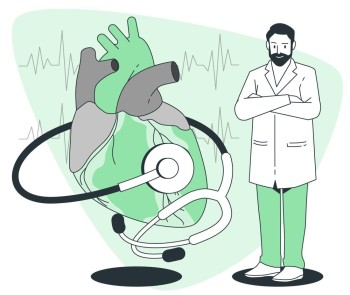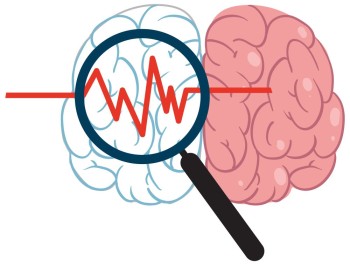
Magnetic Resonance Imaging (MRI) takes center stage in unraveling the intricate details of facial anatomy, providing a non-invasive and comprehensive exploration.
MRI Face Scan with Cost
MRI Face: A Detailed Glimpse into Facial Anatomy
Magnetic Resonance Imaging (MRI) takes center stage in unraveling the intricate details of facial anatomy, providing a non-invasive and comprehensive exploration. In this detailed journey, MRI captures the nuances of facial muscles, bones, and soft tissues, offering valuable insights for both medical diagnostics and aesthetic considerations.
Navigating the Magnetic Fields:
At the core of facial MRI lies the interaction with strong magnetic fields. These fields align hydrogen atoms within the facial structures, setting the stage for the subsequent capture of highly detailed images.
Harmony of Radiofrequency Waves:
As radiofrequency waves join the symphony, they interact with the aligned hydrogen atoms, producing signals that are transformed into high-resolution images. This delicate interplay allows for the mapping of facial structures with unparalleled precision.
Soft Tissues Under the Spotlight:
Facial MRI excels in delineating the soft tissues, including muscles and glands. It offers a close-up view of the intricate facial musculature, providing essential information for both medical assessments and cosmetic considerations.
Bones and Cartilage Unveiled:
Beyond soft tissues, MRI unveils the intricacies of facial bones and cartilage. This detailed imaging is crucial for a comprehensive understanding of facial anatomy, aiding in both medical diagnostics and aesthetic procedures.
Sequences Unraveling Complexity:
Specialized sequences such as T1-weighted and T2-weighted imaging unravel the complexity of facial structures. These sequences highlight variations in tissue characteristics, aiding in the identification of anomalies and contributing to precise diagnoses.
Clinical Applications: Beyond Aesthetic Insights:
Facial MRI goes beyond aesthetic considerations, playing a vital role in diagnosing and evaluating craniofacial abnormalities. From conditions like cleft lip and palate to temporomandibular joint (TMJ) disorders, this imaging modality provides valuable insights for various medical specialties.
Patient-Centric Experience: Non-Invasive Comfort:
Patients undergoing facial MRI experience a non-invasive and often more comfortable imaging journey compared to other techniques. The absence of ionizing radiation further emphasizes the safety and well-being of individuals.
Preparing for the Facial MRI: Clinical Considerations:
Prior to a facial MRI, patients may follow specific preparation steps, including the removal of metallic objects. In certain cases, contrast agents may be introduced to enhance the visibility of specific structures, contributing to a more detailed diagnosis.
Interpreting the Visual Tapestry: Radiologist's Art and Science:
Radiologists bring an artistic touch to the scientific interpretation of facial MRI. Their expertise allows them to decipher anomalies and contribute to accurate medical diagnoses, fostering a collaborative approach to patient care.
Comparative Insights: The Unique Role of Facial MRI:
When compared to other imaging techniques like CT scans, facial MRI stands out for its focus on soft tissues without the use of ionizing radiation. This uniqueness positions facial MRI as a preferred choice in specific scenarios.
Advancing Medical Knowledge: Facial MRI in Research:
Facial MRI contributes significantly to advancing our understanding of facial anatomy, offering a platform for in-depth research studies. Additionally, the detailed images aid surgeons in surgical planning, ensuring precise procedures while preserving facial aesthetics.
In summary, MRI of the face unfolds as a dynamic exploration of facial intricacies, seamlessly blending medical diagnostics and aesthetic considerations. It stands as a testament to the technological marvels that continue to shape the field of diagnostic imaging.
Frequently Asked Questions about MRI Face
Is MRI of the face painful?
No, MRI of the face is generally painless. It involves lying still on a comfortable table as the machine captures detailed images of facial structures. Patients may experience a mild sensation due to the magnetic fields, but it is not considered painful.
What is the duration of a facial MRI?
The duration of an MRI of the face varies but typically lasts between 30 to 60 minutes. The specific imaging requirements and the area being examined influence the actual time.
Are there any risks associated with facial MRI?
Facial MRI is considered safe and does not involve ionizing radiation. However, individuals with metal implants or pacemakers may have contraindications. It's crucial to inform healthcare providers of any relevant medical history.
Can everyone undergo MRI of the face?
While facial MRI is generally safe, certain conditions or medical implants may restrict some individuals from undergoing the procedure. Pregnant women are often advised to avoid unnecessary exposure to strong magnetic fields.
How is a facial MRI different from other imaging techniques?
Facial MRI focuses on soft tissues without using ionizing radiation, offering detailed insights into facial anatomy. It is particularly valuable for both medical diagnostics and aesthetic considerations.
Do I need to fast before a facial MRI?
In most cases, there is no requirement to fast before a facial MRI. However, it's essential to follow specific preparation instructions provided by the healthcare provider, which may include refraining from eating or drinking for a certain period.
Should I remove makeup or jewelry before the facial MRI?
Yes, it's advisable to remove makeup and jewelry before a facial MRI. Metallic substances can interfere with the magnetic fields, affecting the quality of the images. Following the guidelines ensures a smooth and accurate imaging process.
Can I take my regular medications before the MRI of the face?
In general, individuals can continue taking their regular medications before a facial MRI. However, it's crucial to inform the healthcare provider about all medications, including prescription and over-the-counter drugs, to ensure a comprehensive understanding of the patient's health.
Is there any clothing restriction for a facial MRI?
While there might not be strict clothing restrictions, patients are usually provided with a gown to wear during the facial MRI. It ensures that no metallic elements interfere with the imaging process, guaranteeing clear and accurate results.
How should I prepare for potential anxiety or claustrophobia during the MRI?
If a patient anticipates anxiety or claustrophobia during the facial MRI, it's essential to communicate this concern to the healthcare provider beforehand. They may provide guidance or options, such as the use of relaxation techniques or, in some cases, mild sedation to enhance comfort.
Can I wear my contact lenses or glasses during a facial MRI?
It's advisable to remove contact lenses and glasses before a facial MRI. The magnetic fields can affect these accessories, potentially causing discomfort or compromising image quality. Patients should follow the specific guidelines provided by the healthcare team.
Is there any specific medical history information I need to provide before the facial MRI?
Yes, patients should provide a comprehensive medical history before a facial MRI. This includes information about any metal implants, pacemakers, previous surgeries, allergies, and other relevant details. Open communication ensures the healthcare team can tailor the procedure to individual needs and safety.
These FAQs aim to address common queries about MRI of the face, providing essential information for individuals considering or undergoing this imaging procedure. Seek
personalized guidance from healthcare professionals based on individual health
circumstances.
(0)
Login to continue



